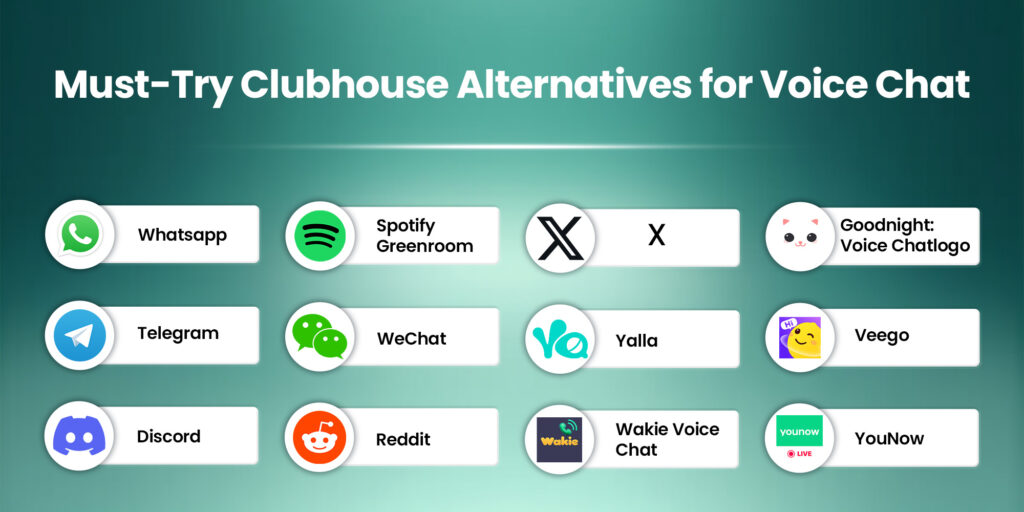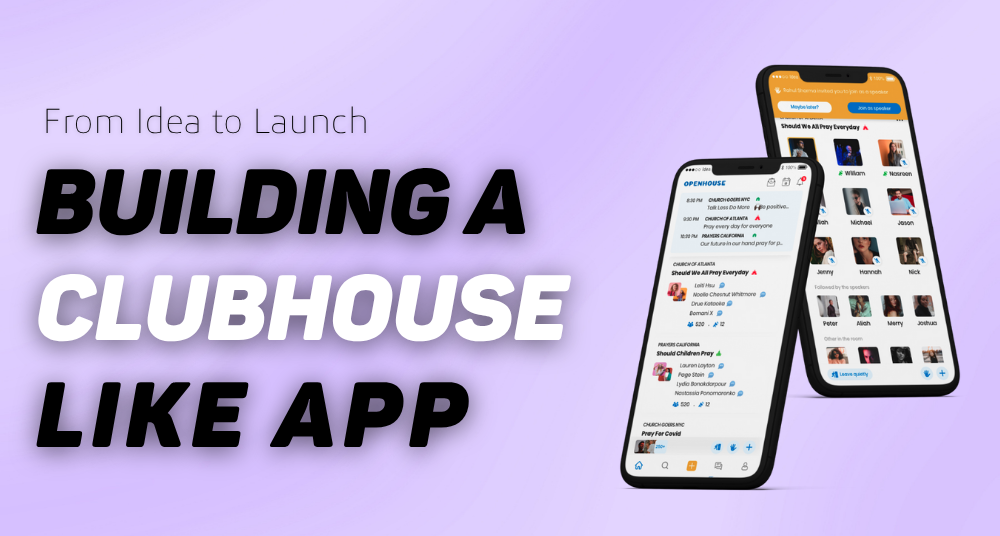We’re living in a digital-first era where social media platforms are not just places to scroll—they’re where communities thrive, ideas spark, and friendships are formed. Among these, voice-based apps like Clubhouse have redefined how people connect, communicate, and collaborate in real time. Unlike traditional social networks, Clubhouse introduced an innovative concept—drop-in audio chat rooms, where users can join live conversations, listen, or contribute on the fly.
With users spending more time on audio hangout platforms, the demand for voice chat apps is skyrocketing in 2025. Whether it’s for casual talk, professional networking, podcast-style discussions, or community events, voice-first apps offer an intimate and distraction-free space for real interaction.
In this guide, we’ll walk you through everything you need to know to build an app like Clubhouse—from choosing the right tech stack and features to monetization strategies, design tips, and real-time audio integrations. Whether you’re a startup founder, entrepreneur, or developer, this guide will help you take your idea from concept to launch and build a voice chat platform users love to hang out on.
Why Investing in Voice Chat App Development Is a Smart Move
Growing Demand for Real-Time Audio Communication:
App like Clubhouse, Twitter Spaces, and Discord have shown that users love real-time, drop-in voice chats. This trend is driven by people’s desire for more authentic and engaging conversations without the pressure of video or text.
High User Engagement and Retention:
Voice chat apps encourage spontaneous interactions, which leads to longer session durations and frequent user returns. This high engagement level is key to building a loyal user base.
Lower Development and Operational Costs:
Compared to video apps, voice-based platforms require less bandwidth and simpler technical infrastructure. This makes the development process more cost-effective and scalable.
Diverse Monetization Opportunities:
Voice chat apps offer multiple ways to generate revenue such as subscriptions, in-app purchases, virtual gifts, sponsorship deals, and exclusive audio events. This variety makes them attractive to both entrepreneurs and creators.
Versatile Use Cases Across Industries:
Beyond social networking, voice apps are used in education, gaming, professional networking, therapy, and live events. Their flexibility broadens the target market and user demographics.
Accessibility and Convenience:
Voice apps are easier to use and more accessible than video, especially in areas with limited internet connectivity or for users multitasking during calls.
Room for Innovation:
While social media is crowded with text and video platforms, voice chat apps still offer fresh ground to innovate, target niche audiences, and differentiate your brand.
Future-Ready and Scalable:
Voice communication is a growing trend shaping the future of social interaction, making investment in voice chat app development a forward-thinking and scalable opportunity.
Essential Steps to Build and Launch a Voice Chat App Like Clubhouse
Research and Define Your Target Audience
Before diving into development, understand who your app is for. Analyze the demographics, interests, and behavior of your potential users. Are you targeting professionals for networking, hobbyists for casual talks, or content creators for community building? Understanding your audience will help tailor features and design to meet their needs effectively.
Identify Key Features and Unique Selling Points
To stand out in the competitive market, your app must offer a compelling user experience. Core features of a voice chat app include:
- Real-time voice rooms with moderation controls
- User profiles and social networking integration
- Room discovery and invitations
- Push notifications for events and follow-ups
- Recording and playback options
- Monetization tools like paid rooms or tipping
Consider what unique features you can add—such as AI-powered voice moderation, enhanced privacy controls, or topic-based room recommendations—to differentiate your app from competitors.
Choose the Right Technology Stack
Selecting the appropriate technology stack is crucial for scalability and performance. Key technical components include:
Backend: Node.js, Python (Django), or Golang for handling real-time connections
Frontend: React Native or Flutter for cross-platform mobile app development
Real-Time Communication: WebRTC or custom VoIP solutions to enable low-latency voice transmission
Cloud Services: AWS, Google Cloud, or Azure for hosting, storage, and data processing
Database: MongoDB or PostgreSQL for user data and session management
Partnering with experienced developers or a specialized app development company can ensure you pick the best tools for your project.
Design an Intuitive User Interface (UI)
User experience is a key factor in the success of voice chat apps. The UI should be simple, visually appealing, and easy to navigate. Prioritize accessibility with clear buttons for joining/leaving rooms, mute/unmute options, and smooth transitions. Using familiar design patterns will reduce the learning curve and increase user adoption.
Develop and Test the MVP (Minimum Viable Product)
Start by building a Minimum Viable Product (MVP) that includes core features. This approach saves time and resources while allowing you to gather early user feedback. Conduct rigorous testing for voice quality, latency, and app stability. Testing should cover different devices and network conditions to ensure a smooth experience for all users.
Implement Robust Security and Privacy Measures
Given that voice chat apps handle real-time communication, privacy and security are paramount. Implement end-to-end encryption for voice data, secure authentication mechanisms (like OAuth or two-factor authentication), and data protection policies compliant with regulations like GDPR. Also, include moderation tools to prevent abuse and maintain a healthy community.
Launch a Beta Version and Collect Feedback
Before a full-scale launch, release a beta version to a select group of users. Use their feedback to identify bugs, improve features, and enhance usability. Engaging your beta testers as early advocates can also help build momentum for your app’s official release.
Plan a Marketing and User Acquisition Strategy
A well-planned marketing strategy is essential to gain visibility in the crowded app marketplace. Leverage social media campaigns, influencer partnerships, PR outreach, and content marketing to attract users. Highlight your app’s unique features and community-building potential to generate buzz.
Monitor Performance and Continuously Improve
Post-launch, track key metrics such as user engagement, retention, and revenue. Use analytics tools to understand user behavior and identify areas for improvement. Regularly update your app with new features, bug fixes, and performance enhancements to keep users engaged.
Explore Monetization Models
To sustain your app, consider multiple monetization options such as:
- Subscription plans for premium features
- In-app purchases or virtual gifts
- Sponsored rooms or events
- Advertising partnerships
Best Clubhouse Alternatives You Can Try Today

- Telegram
- Discord
- Spotify Greenroom
- X [Formerly Twitter]
- Yalla
- Wakie Voice Chat
- Goodnight: Voice Chat
- Veego
- YouNow
Related Blog: Top 12 Cash Advance Apps Like MoneyLion
In a Nutshell
In summary, building a voice chat app like Clubhouse in 2025 offers exciting opportunities to connect users through real-time audio interactions. By understanding your audience, selecting the right technology, focusing on intuitive design, and implementing strong security, you can create a platform that stands out. Remember to test thoroughly, gather user feedback, and plan effective marketing to ensure a successful launch. With diverse monetization options and growing demand for voice communication, investing in a voice chat app is both a smart and future-ready business move.






What do you think?
It is nice to know your opinion. Leave a comment.